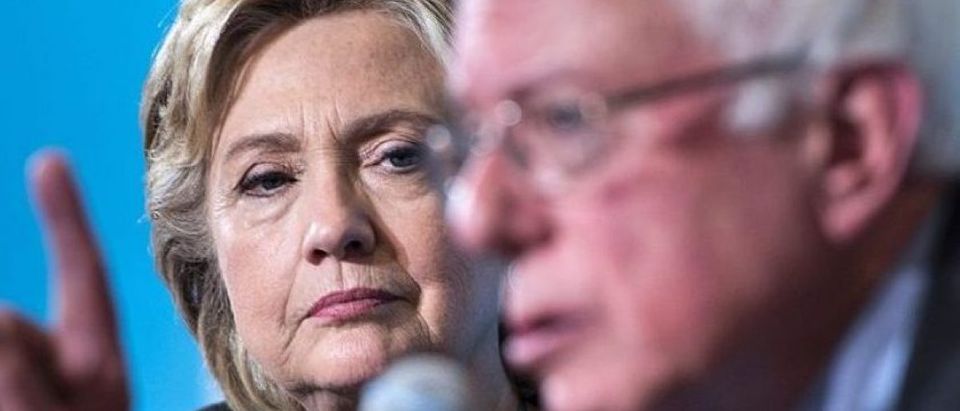It took a few months, but Democrats are finally starting to get over Hillary’s loss in November. But as they move on, they have an even harsher reality to face: they have no future leaders, mostly because the old guard won’t get out of the way.
Quick, name a leading Democrat for the 2020 Presidential run. Give up? I don’t blame you because I’m at a loss as well. Hillary has said she’s done, and given her health issues, that choice was probably made for her. Bernie? He’ll be 78 then, which will be a major detriment. Joe Biden? Aside from his gaffe-a-minute mouth, he’ll also be in his late 70s.
The very first 2015 Democratic Presidential debate should have sent up red flags of a big problem. While the Republicans had a wide field to choose from (perhaps too wide) of governors, Senators and businesspeople, the Democrats had a paltry selection that consisted of a career criminal, Professor Irwin Corey, and a bunch of nobodies. Although in fairness, Jim Webb did come across as someone I could vote for.
And now who will run in four years? Of course there is the great unknown of how well Donald Trump’s presidency will go. If it’s a disaster and failure, candidates will come out of the woodwork. If he does well, the good candidates will stay on the sidelines and the Democrats get more Martin O’Malleys and Lincoln Chafees.
We tend to choose our presidents from the ranks of governors. Trump and Obama knocked that conventional wisdom on its side, but by and large that’s where they come from. With 18 governorships, the Democratic bench remains thin, and who will they pick?
Andrew Cuomo lacks his father’s eloquence and New York isn’t doing all that great. He’s too far left for the central part of the country, which the Democrats are finally realizing they have lost. Ditto Jerry Brown, who is too old and way too far left to be taken seriously in any state that doesn’t abut an ocean.
If anyone had potential it was Governor Mark Dayton of Minnesota. A popular meme floating around last year touted how well Minnesota was doing under his leadership, and while it was overblow in some areas, there’s no denying Minnesota is doing better than a lot of states.
The result is Minnesota businesses didn’t oppose Dayton when he ran for re-election in 2014 and won by a comfortable margin. And he’s a year younger than Trump, so age can’t be made an issue. But his recent health issues pretty much sink him.
Another to consider is Jay Inslee of Washington. Like Dayton, he’s a party-line liberal, but also like Dayton, he knows not to screw up his state’s economy. By and large, Washington has not made life miserable for their businesses the way California has, with one exception: Inslee has gone after e-cigarette vendors in a big way, to the point an e-cig maker moved to Arizona, citing the business hostile climate.
Then there’s John Hickenlooper of Colorado, who was floated as a potential VP for Hillary. Hillary did carry Colorado, and he maintains some popularity for economic policies, but his coziness with fracking companies along with his support for Hillary as a super delegate did not sit well with some Colorado Democrats.
The issue then becomes when will the old guard get out of the way. As we saw in Tim Ryan’s failed challenge of Nancy Pelosi for House leadership, the old guard of the Democratic Party is not going away despite demonstrable failure. Its leadership is Pelosi in the house and Chuck Schumer in the Senate. Hardly new faces.
Naturally I expect many DC readers would like to see the Democratic Party remain in disarray with no viable candidates. But a democracy does not function when one side is dysfunctional. In some ways, you could argue both parties are dysfunctional and I won’t argue. But the absence of real leadership is not good no matter party affiliation, and a true leader can transcend party, anyway.


